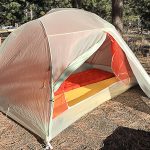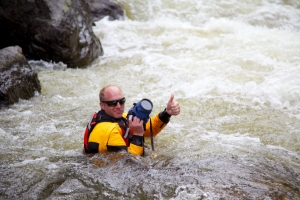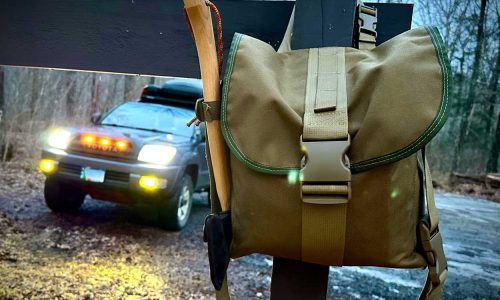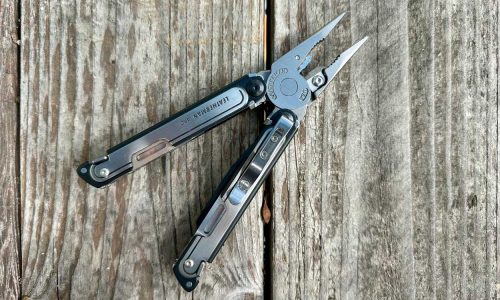Home » Gear Reviews » Hiking & Camping » Kelty AirLift 4
Kelty AirLift 4 Review
March 17, 2016







 79
79 The Good
- No poles to break
- Cozy Vestibule
- All-in-one setup
The Bad
- Can get tangled in itself
- Low wind tolerance
- No outward facing main body windows
The Kelty Airlift series uses pressurized air tubes to form the structure of the tent where poles are usually used. This is great for families with rambunctious kids who won’t be able to break any poles but extra care must be taken to help the tubes stand up during inflation.
Ease of Setup & Breakdown
The theory of the setup and breakdown being super simple is half right. Even when the tent is properly managed the inflatable tubes need some help standing up while inflating them. This can be done solo as a back-and-forth effort between pumping and adjusting and took 13.5 minuts. One logistical issue with the configuration is the air valves are difficult to access as they face inwards inside the vestibule. It would be great if they were on the outer side of the vestibule to make it easy to plug in the included hand pump to start inflating. It’s also important that the tent is staked out before inflating it. If for some reason part of the tent gets twisted or looped over in some way that was unintended the setup process can be maddening. This is most likely to happen with the support strap that runs across the ground inside the vestibule. It’s not a huge deal if the user arrives at their camp around mid-day and has plenty of time to futz with it. But when the arrival in camp is later in the afternoon when other duties are pressing the frustration level could build quickly. Takedown is super simple regardless. Just deflate the tubes, pull up the stakes, fold and roll. Ideally this keeps the tent body and the permanently connected rain fly and vestibule from getting tangled to avoid the aforementioned irritated setup scenario. The tent and pump fit comfortably into the tent bag provided which contributes to the simplicity and hassle-free breakdown and packing process.
Livability & Functionality
The Air Lift footprint is pretty square and the vestibule is big enough to house two full size camp chairs. It’s perfect for porch-like sitting and watching the rain fall outside even with the door flap rolled open. Inside the tent the pockets are minimal with two stacked over each other on either side of the door. The lowest pocket sits about three feet above the floor making access while lying in bed awkward, unless cots are used. The upper pocket is at a good height for reaching into while standing up either inside the tent or reaching in from the vestibule. A zenith loop is available for hanging a lantern and there are four loops in the upper corners to install a small gear loft or for stringing line to hang things.
Materials & Construction
The first, and totally fair concern most have with the idea of inflatable poles is if they are susceptible to puncture. Kelty has done a great job of constructing the inflatable tubes with an inextensible PE fabric on the inside and a burly 210 denier exterior fabric to ward off possible punctures. Nevertheless, there’s an air tube repair kit included to patch up a puncture if somehow something does get through. The rest of the tent body and floor are pretty standard 68D Polyester rated to 1800mm water resistance.
Weather Resistance
As mentioned above, the tent fabric water resistance is rated to 1800mm which is pretty good considering most tents are in the 1500mm range. This means it will easily shed sustained rain. And with the dual layer style construction the wet outer layer is buffered from the body fabric of the inner tent. Of bigger concern is if any standing water gets under the tent, the floor will start to wet out after a while (dew on grass shouldn’t be a problem). The Airlift is also more susceptible to wind than most tents with rigid poles. Guying the tent out does a great job and is a must if there is any chance of any wind. The main body has three large mesh panels, one on each sidewall and in the back allowing some airflow between the body and the rain fly. In cooler climates, these help avoid condensation gathering on the inside of the tent but won’t trap much heat.
Versatility
With only one door, no outward looking windows in the main body of the tent and an encompassing vestibule, the Airlift is best suited for more temperate climates. Despite the concern for wind blowing, with a gentle breeze the Airlift will work for some desert camping situations. But while the fly can be removed from the body of the tent, it’s a chore since it’s designed to be left attached when stored. And with the air poles being susceptible to heavy wind the tent does best tucked in amongst the shade and protection of trees.
Cameron Martindell
- Test Director & EditorCameron Martindell is the Gear Institute's Gear Test Director, responsible for coordinating our gear testing team, recruiting new experts, and maintaining the Gear Institute's editorial standards for product testing.



















